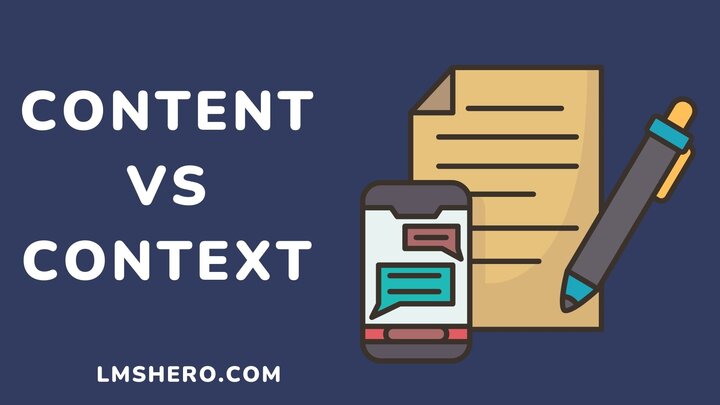Content is the complete information a topic contains, while context is the background or method by which the information is disseminated.
For a long time, the saying “content is king” has ruled the worlds of education and marketing. While content is significant, it may hold no value without the right context. For content to derive the right result, it must be presented in the right context.
In other words, context gives the right meaning to every content in the same way it can render it meaningless (if used wrongly).
This article breaks down the difference between content and context and everything you should know to get the best out of their combination.
What is Content?

Content is the major information a written topic passes across to readers. They are also known as the facts present in every teaching.
Why is Content Important?
The facts, or the bottom line of every written piece, inform readers about a particular topic. Thanks to this, content allows readers to confirm whether the fact is authentic or has been tweaked to suit a narrative.
Let’s see an example:
In schools, each subject or course has a syllabus. A syllabus is an aggregation of different topics for different stages. If a biology syllabus contains topics about animal and plant cells, what the content it is passing across is that students will learn those topics.
What is Context?
Context is the background against which readers perceive and understand the significance of information or content.
Why is Context Important?
The purpose of context is to help readers understand the relevance and significance of the content they are studying.
Let’s see the previous example from a context point of view:
Thanks to the content provided in the syllabus, it became glaring that students know they will learn about plant and animal cells.
Context-wise, the topics in the syllabus have to feature the application and relevance of each topic to advanced fields like histology and pathology.
Content vs Context: The Difference Between the Two
| Content | Context |
| Content is the original message a subject matter contains. | Context is the background against which a piece of information is disseminated. In other words, context dictates how clear your message is to listeners. |
| The content aims to ensure students learn facts in the syllabus | Context aims to ensure students learn facts correctly or the different ways every fact can play out. |
| To measure content, you must conduct tests and other assessments on what students know about a subject matter. | Measuring context requires surveys to test for various diversities among students and how best to teach them. |
| Analyzing content ensures students are taught all the topics in the syllabus within a specified period. | Analysis context gives you a clear picture of what could be missing or why students are not digesting the content rightly. |
How to Fold Relevant Context into Each Piece of Content
Whether you’re a teacher or want to ensure you’re communicating effectively, you must fully grasp the best way to use content and context correctly. This is because the success of every message depends on it.
The following are some helpful tips on how to incorporate the right context into content:
1. Know your audience
Whatever information you’re communicating, in-depth knowledge of your audience will go a long way in positively influencing the results you generate.
Before releasing any content, you have to put yourself in the place of your audience. This ensures you pass the right message to the right people.
2. Consider their pain points and challenges
Understanding pain points and challenges help to incorporate the right context into the content.
For example, suppose you’re writing about a product that is likely to be of interest to people who are struggling financially. In that case, it’s important to understand those people’s specific challenges.
This will help you write relevant, useful content that addresses your target audience’s needs.
3. Create supportive content
Since you already know your audience’s pain points, you have to provide supportive content using the right context.
Content such as case studies, explainer videos, and informational articles can go a long way in bridging the problem-solution or teaching and learning gap.
4. Use tags Or dynamic features
Context is about personalizing experiences and setting up triggers that provide resourceful information to readers.
Engaging in tags and including dynamic features like ads, chatbots and emails can provide the right user experience (context) for your brand’s message.
FAQs
Which is more important, context or content?
Context is more important than content. It covers how a topic is discussed in a conversation, when it should be discussed and when it should not.
What is content and context analysis?
Content analysis is all about a text’s ideas or bottom line, while contextual analysis provides perspective to these ideas.
What is the difference between context and description?
A context is a form of sixth sense description. It cannot be completely separated from a description.
Conclusion
Now that you fully understand the difference between content and context, I believe there is no point in arguing about which is a better standalone entity.
Instead, it would help if you focused on combining both concepts as a brand or educator to improve your communication skills. To learn more about communication, please read a comprehensive guide on communication skills.
I hope you found this article helpful.
Thanks for reading.






